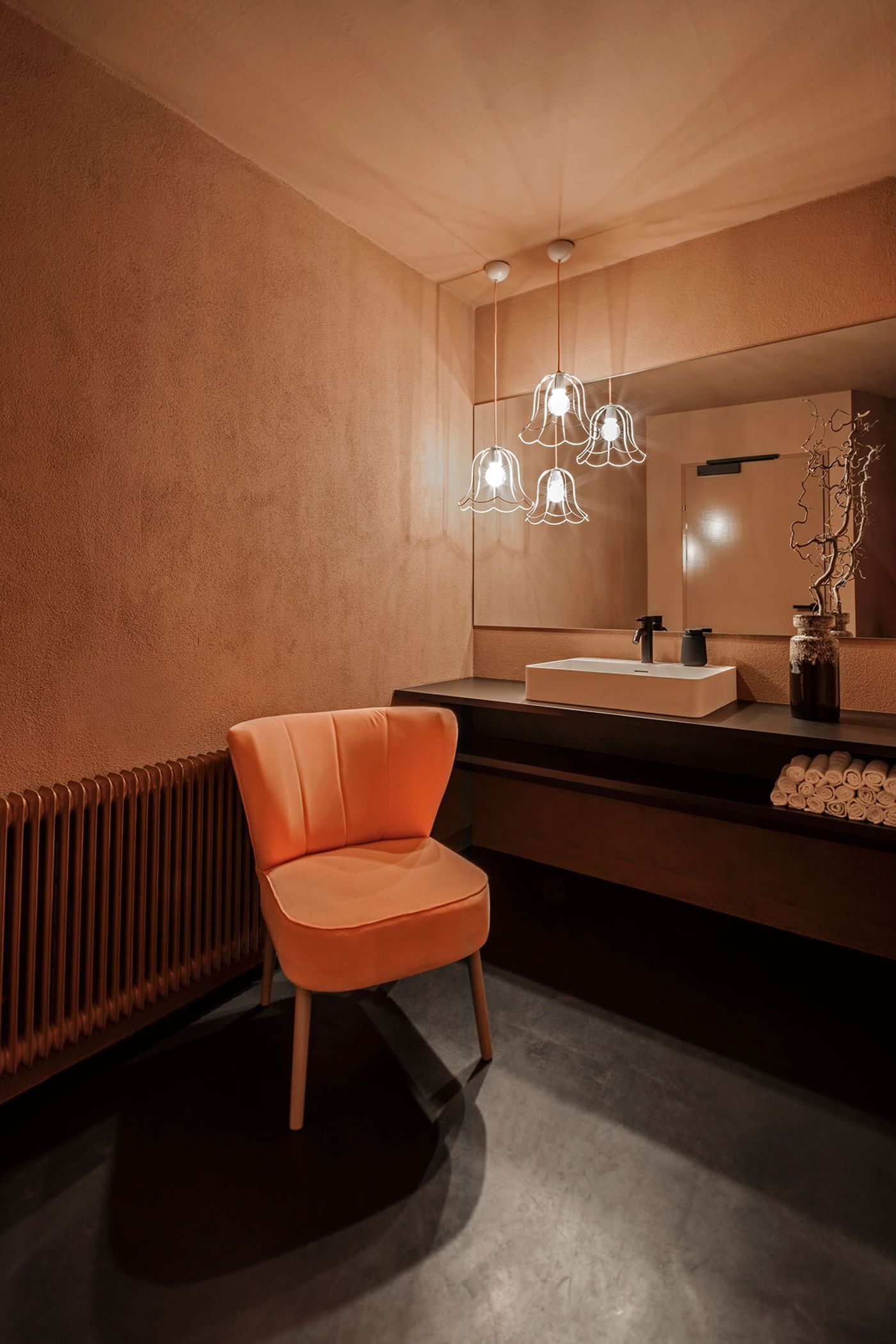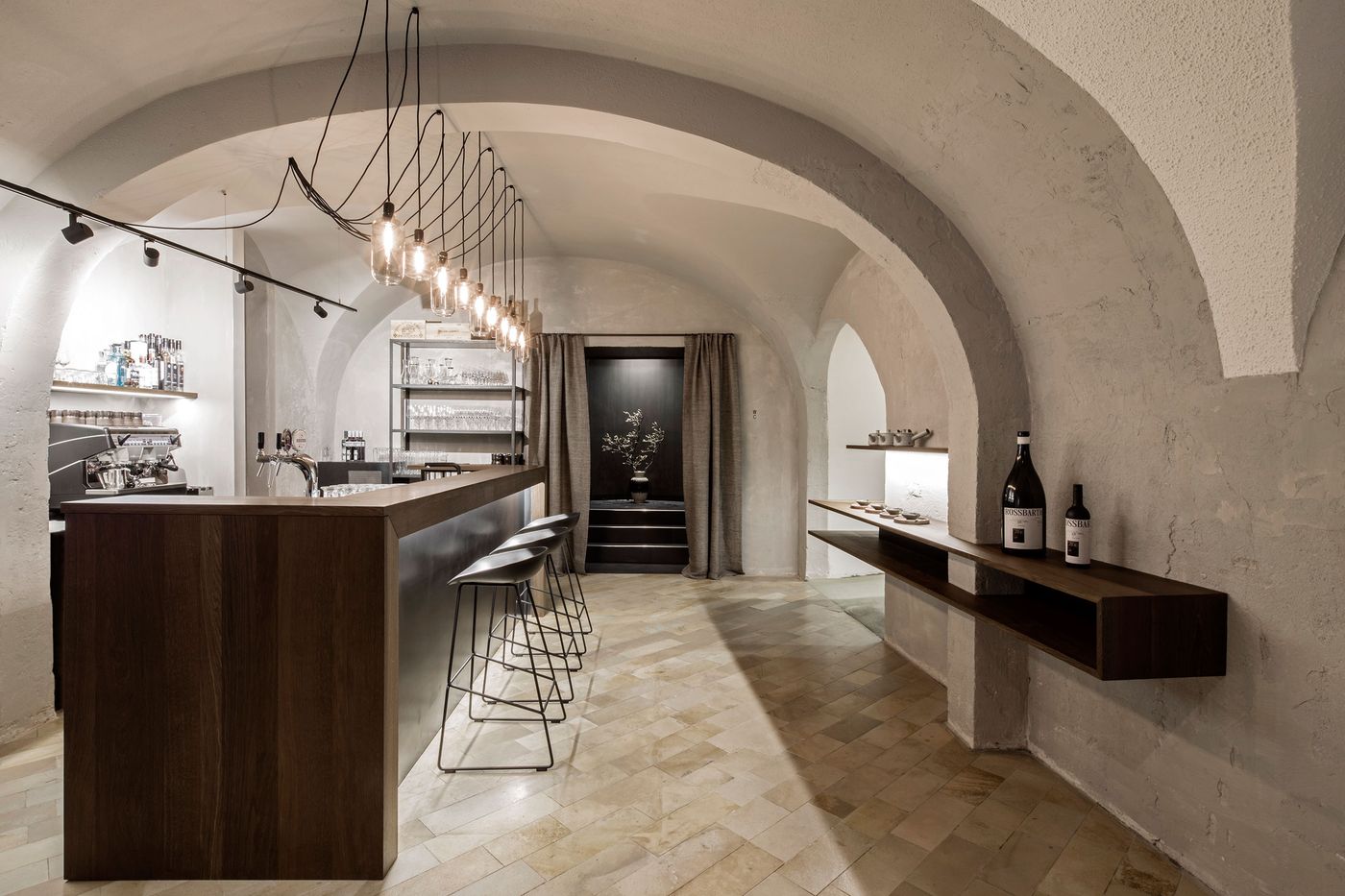
Rossbarth's Culinary Experience of Monastic Sophistication
Words by Yatzer
Location
Linz, Austria
Rossbarth's Culinary Experience of Monastic Sophistication
Words by Yatzer
Linz, Austria
Linz, Austria
Location
Housed in a historic building in Linz, Austria, Rossbarth is a new restaurant by two young chefs, Sebastian Rossbach and Marco Barth whose core mission in the kitchen is to combine familiarity with novelty. Inspired by the chefs’ culinary philosophy, Austrian interior design studio destilat has created a space of monastic simplicity and modernist minimalism that feels both timeless and contemporary.
Working with fresh ingredients from regional family businesses and small traders, Barth and Rossbach’s food has a home-like sensibility complemented by a sophisticated and creative cooking approach that makes the restaurant’s dishes simple but by no means boring. The use of seasonal produce allows the chefs to offer weekly changing menus that reinvent staple Austrian dishes such as parsnip foam soup with grapes and nuts, blood sausage with sauerkraut and horseradish, and Gröstl, a Tyrolian vegetable and potato fry-up.
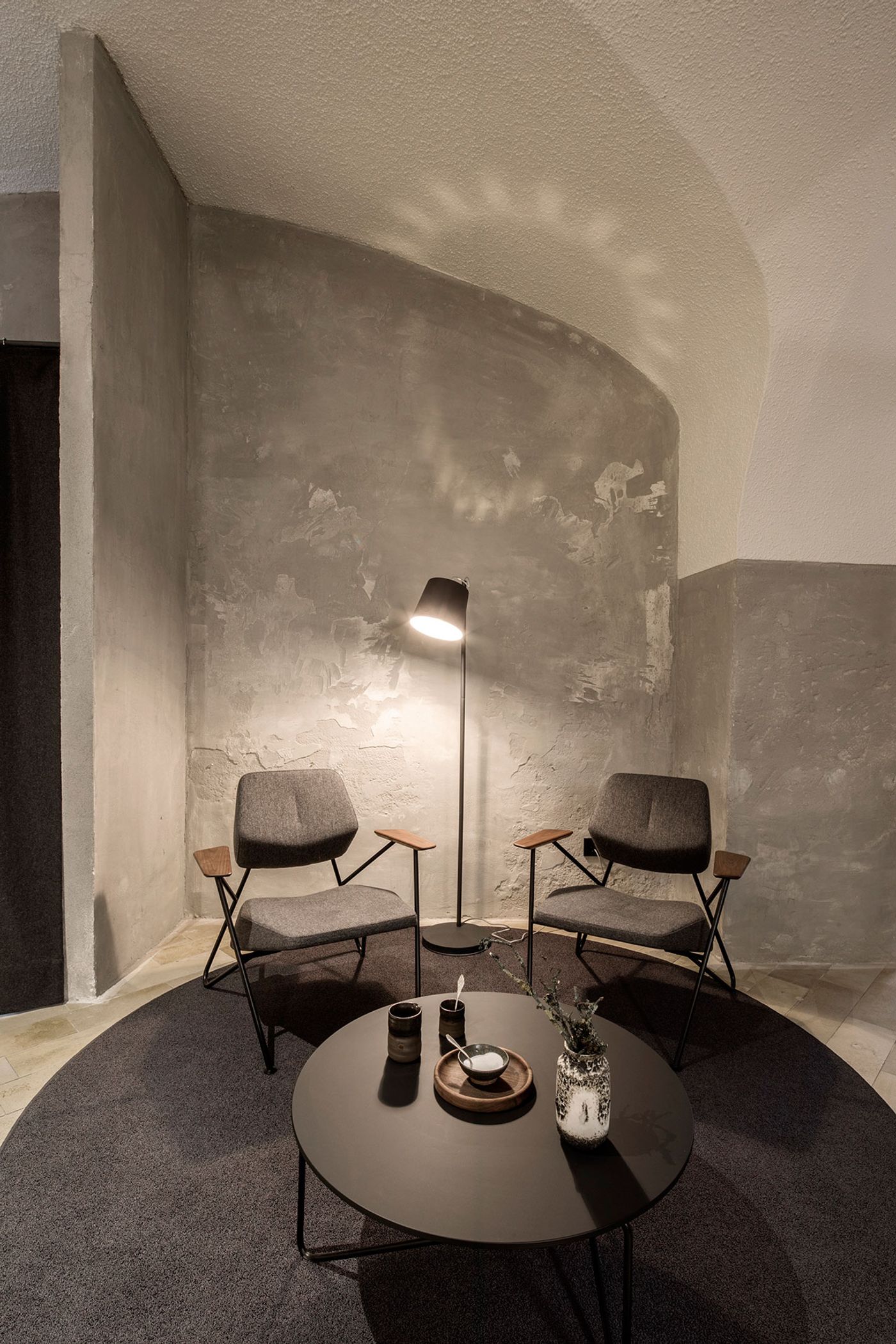
Photo by Monika Nguyen.
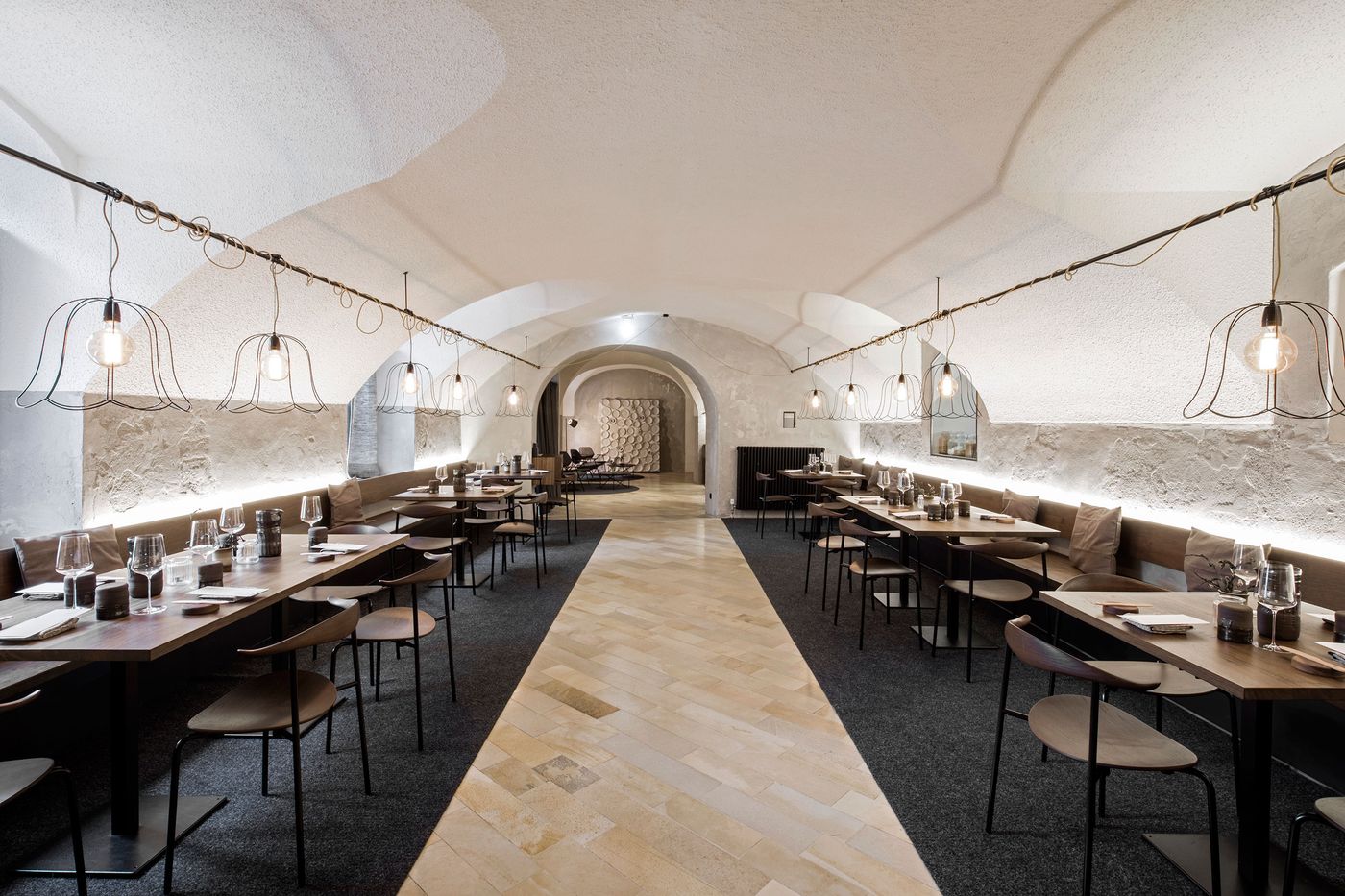
Photo by Monika Nguyen.
The humble ethos of the culinary offerings is masterfully reflected in destilat’s interior design that aims to restore the original spartan character of the landmarked building while sparsely furnishing the space through an aesthetic of radical modernism and subtle playfulness. The designers summarize this approach as a quest “for innovations that appear familiar, for provocations that touch our inner self, for functional gravity that makes us laugh”.
By removing the false ceiling that the previous occupant had installed, a vaulted roof has been revealed that harks back to the centuries-old masonry structure, while the original walls and flooring have been meticulously restored whenever possible. The décor has been kept to a minimum with concealed lighting enhancing the ascetic architecture and pendant lights with phantom lampshades injecting an austere playfulness, while Scandinavian designer armchairs invoke a restrained sophistication.
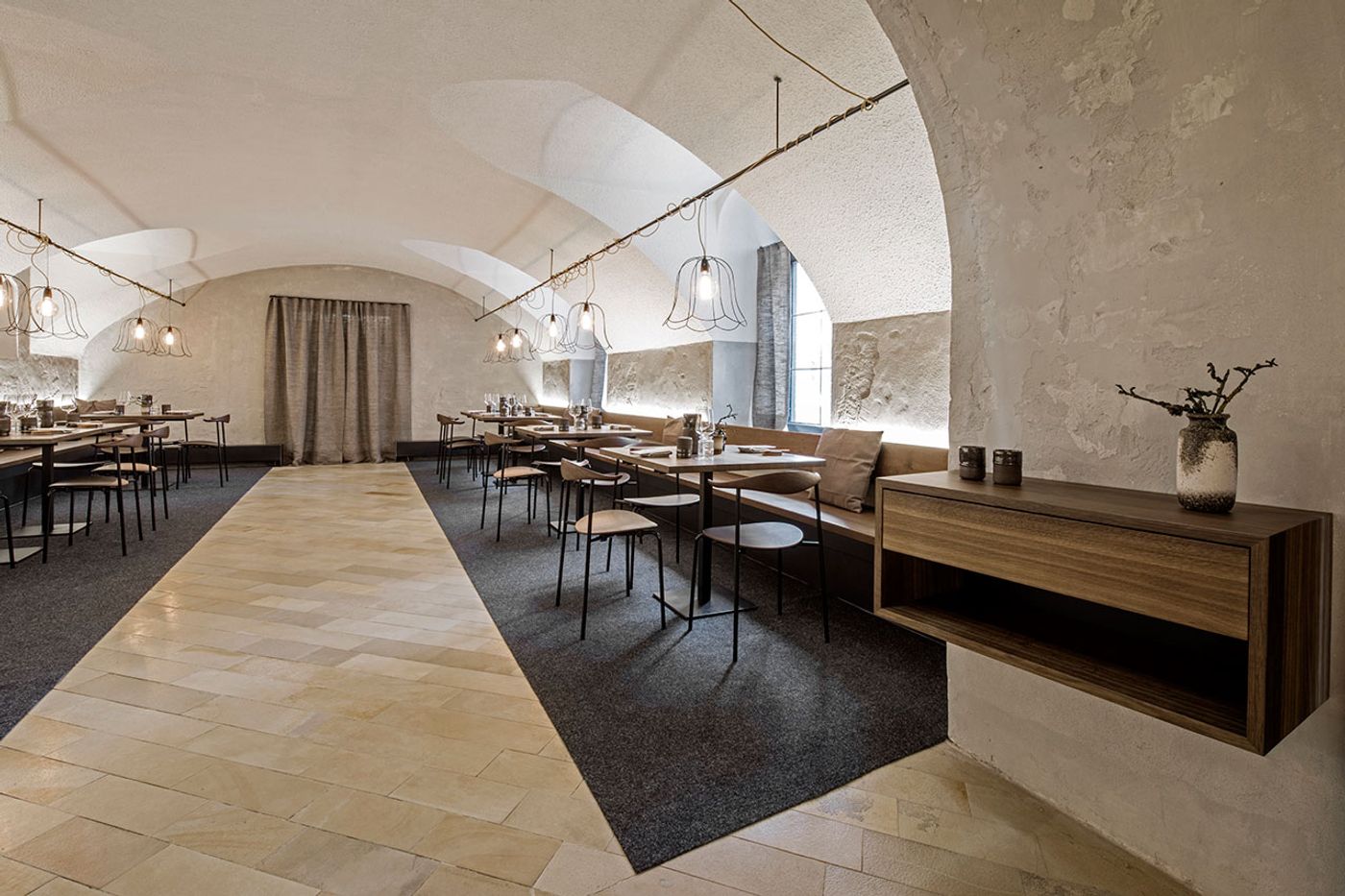
Photo by Monika Nguyen.
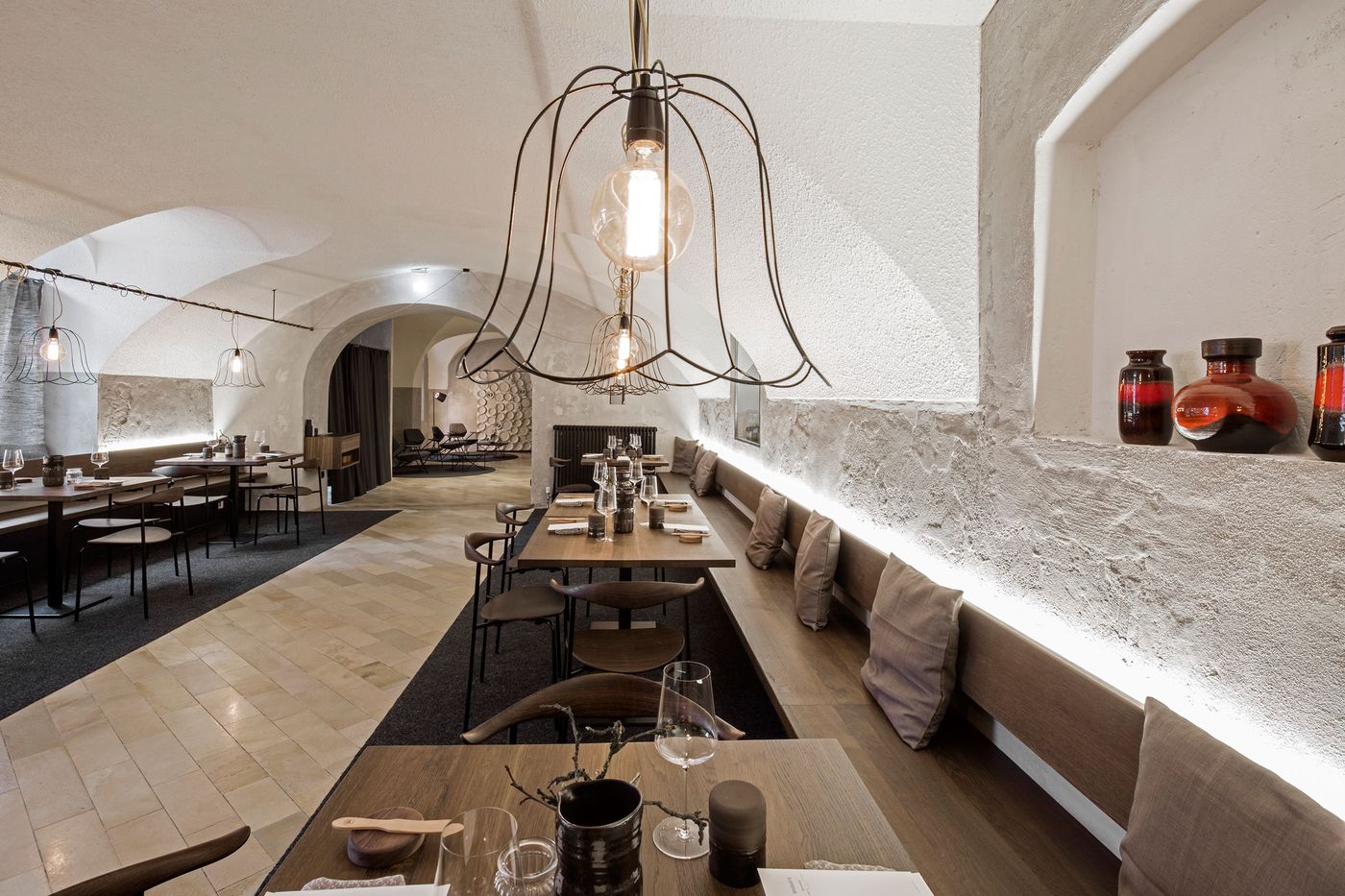
Photo by Monika Nguyen.
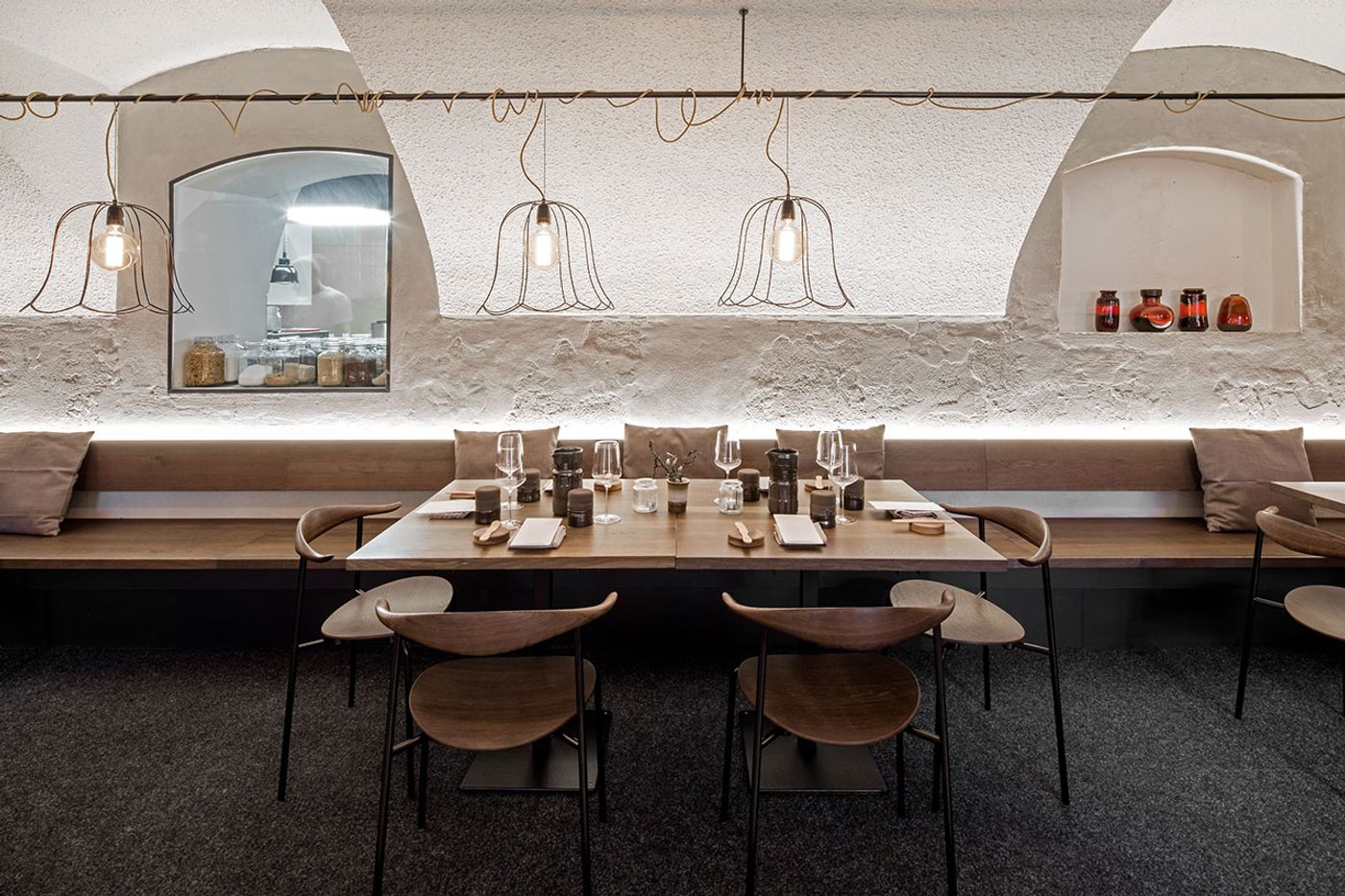
Photo by Monika Nguyen.
Mirroring the chefs’ practice of using locally sourced products, the interiors have been constructed by predominately local craftsmen using local materials, such as the smoked oak and sheet metal bar counter. The practice also applies to the restaurant’s tableware with bespoke ceramics made by small pottery studio bern.ceramics in neighbouring Seewalchen am Attersee, and exquisite wooden bowls from Reichraming-based timber supplier Christian Kleinhagauer.
In order to maintain a connection between diners and the kitchen, which the restaurant’s chefs had requested, the dining area features a window that allows patrons to catch glimpses of the chefs working, while the bar area is only separated from the kitchen with a serving counter. A small reception-cum-lounge and a private dining room featuring a display area for books and handicrafts made by local artisans complete the modest interiors that discretely make way for the food to take centre stage.
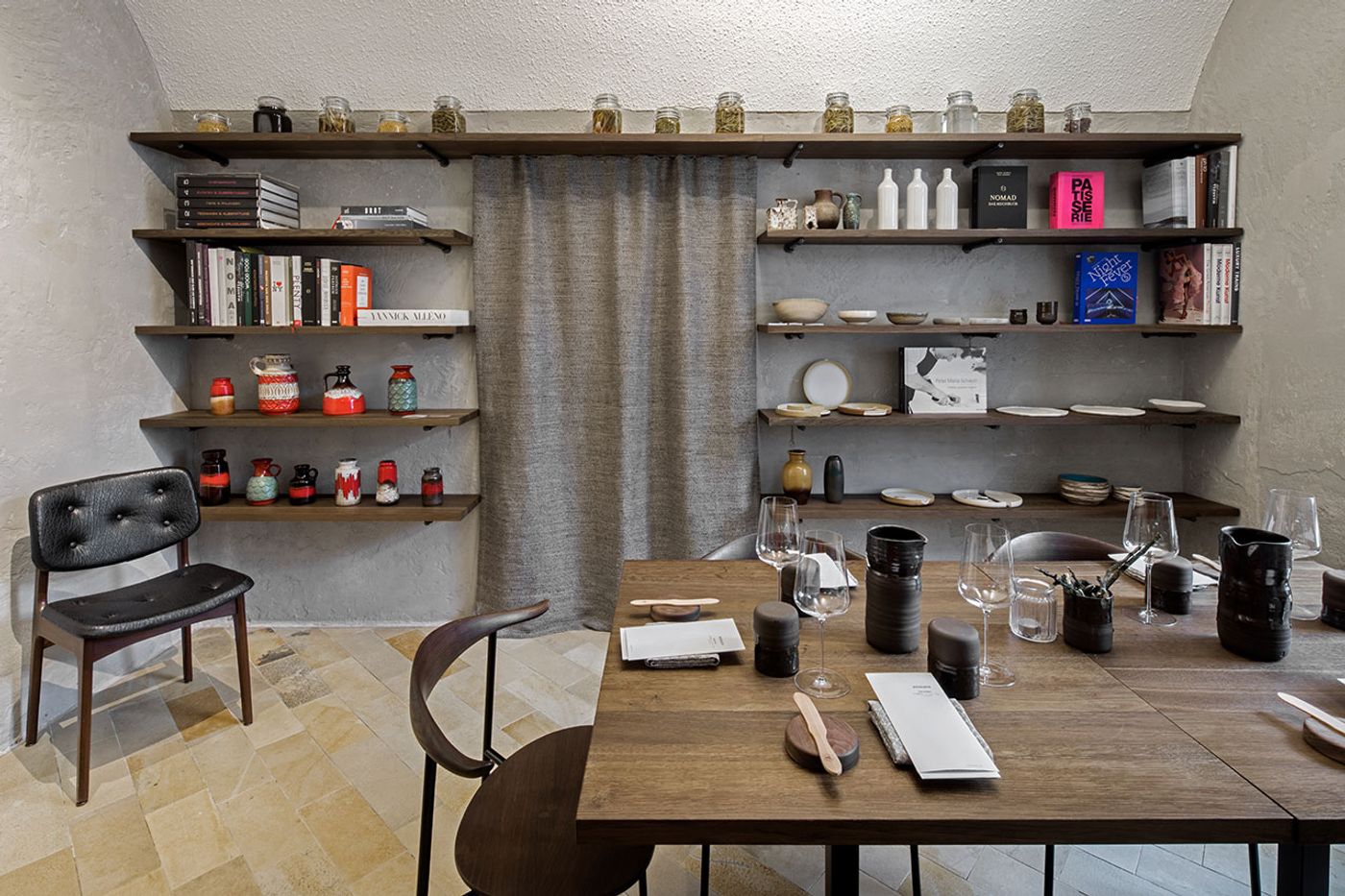
Photo by Monika Nguyen.

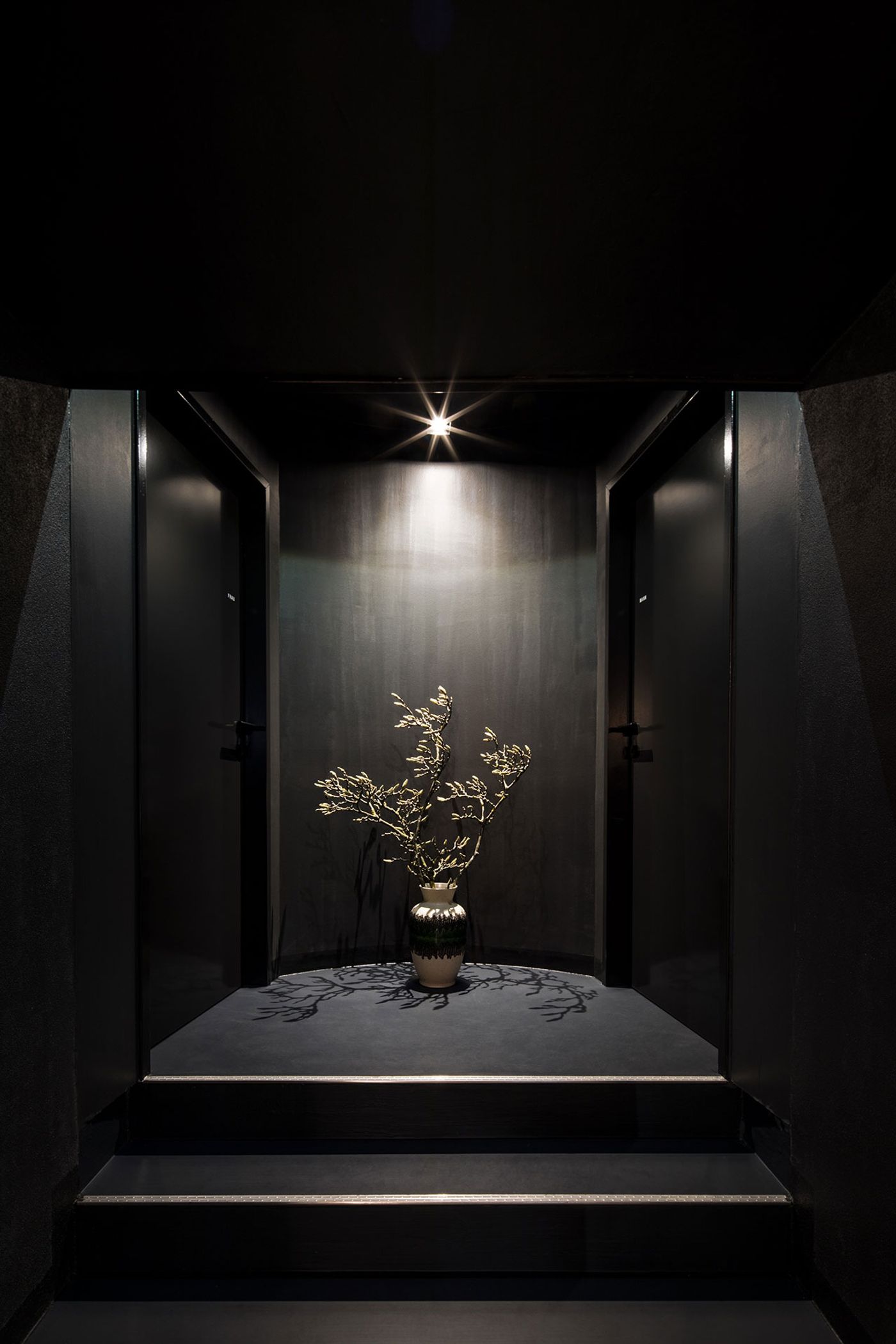
Photo by Monika Nguyen.


